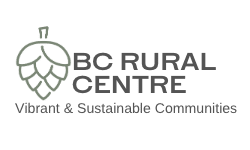
Pilot Pairs Immigrants & Rural Communities
New federal immigration pilot is pairing remote northern cities with newcomers who need jobs
Some small rural communities in Northern B.C. facing a looming shortage of workers are hoping a new federal immigration program might help fill the employment gap.
Right now, more than 75 per cent of newcomers to Canada choose to live in large cities like Vancouver and Toronto.
“It’s hard to recruit people to northern areas because it can be cold and it does feel remote,” said Kathleen Connolly, executive director of the Dawson Creek Chamber of Commerce.
“We all recognize that as our population is aging, there will be a gap.”
The Rural and Northern Immigration Pilot is hoping to address the growing gap by encouraging newcomers to settle in communities like Prince George, Dawson Creek and Terrace.
The federal initiative is launching in a handful of communities across Canada that meet specific size criteria and have economic development plans in place.
“Any opportunity to get people who want to come experience our country … we’re happy to have them,” Connolly said.
‘Jobs, jobs, jobs’
Williams Lake Mayor Walt Cobb emphasized the number of jobs that need to be filled across sectors in Northern B.C.
“We have jobs, jobs, jobs that we can’t fill,” Cobb said.
It’s not just entry level jobs that face a shortage, Cobb said. Everything from the service and tourism sector to the forest and mining industries to the medical field need more people.
He said he plans to bring up applying for the immigration pilot with council.
“If there’s jobs here, why not fill them?” he said.
Before selecting participants, the government looks at both the community’s need for immigration to support the local economy and its ability to support newcomers once they arrive.

Williams Lake is a small town in the northern Interior of B.C. with a population of just over 10,000 people. Communities must have 50,000 people or less (if they are 75 kilometres from the core of a large metropolitan area) or up to 200,000 people (if more remote) to apply for the pilot program. (Karen Neoh/Flickr)
Labour shortage as a ‘national problem’
Joel McKay, executive director of the non-profit Northern Development Initiative Trust, said attracting newcomers — whether Canadian citizens or immigrants — is key to improving economic growth in the region.
The growing labour shortage is not just a problem in remote communities, he emphasized.
“In past years, northern communities have been competing with one another for talent but that’s shifting now, and we’re seeing this become a national problem,” he told CBC Daybreak North.
“Major cities like Vancouver, Toronto [and] Montreal are all experiencing the same challenges because of the aging workforce across the country.”
Remote and rural communities have the additional struggle of attracting people to move and stay though, he said.
“We don’t necessarily, in all of our communities, have the housing or the amenities that would attract folks that they’re used to in larger centres,” McKay said.
“There has to be a lifestyle component to this, and, so, investing in making attractive communities is a big piece.”
